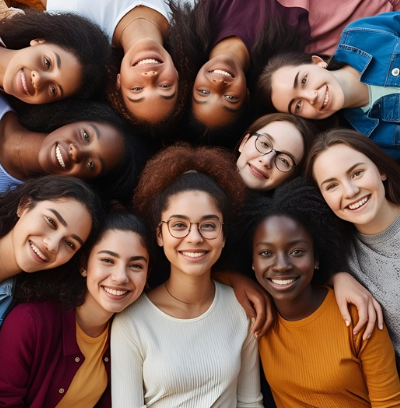By Liz Day, Founder of Collectively Diverse
Mental health is a conversation we’re nearly all having more openly these days—but when it comes to neurodivergent young people, we need to go further. It’s not just about awareness, but understanding, proactive support, and challenging common myths. Whether you’re a parent, carer, or educator, you’re part of a powerful support network—and your role matters more than ever.
Busting the Myths Around Mental Health
Let’s start with some common misconceptions. These came up in a quiz we use during training, and sometimes catch people out:
- “Mental health refers to poor mental health.” ❌ Myth
- “Neurodivergent young people are more likely to mask their distress.” ✅ Fact
- “Talking about mental health makes things worse.” ❌ Myth
- “Children can’t experience anxiety or depression.” ❌ Myth
Sadly, many neurodivergent young people do mask their distress, and the result is that their needs often go unseen. This is why early understanding is so important—because what we notice, we can support.
Why It Matters Now
Mental health issues among young people have risen sharply, with neurodivergent youth showing particularly high levels of unmet need (NHS Digital, 2022). But many expressions of distress are misunderstood or dismissed as behavioural problems.
Understanding this landscape was a key part of my Master’s research at the University of Exeter. I looked at mental health literacy in 16–20-year-olds—basically, what they know, believe, and feel confident doing when it comes to mental health. We found clear gaps in help-seeking confidence and ongoing stigma.
What Is Mental Health Literacy?
Mental health literacy isn’t just knowing the names of conditions. According to Dias et al. (2018), it’s about:
- Recognising mental health difficulties
- Challenging unhelpful stereotypes
- Knowing how to seek or offer help
- Practising everyday self-care
For example, understanding that depression isn’t just feeling sad, but a whole-body experience that can affect how someone sleeps, eats, and connects with others. Or that it’s okay—and often necessary—to ask for support, not just push through.
Creating Supportive Environments
Accessing Help and Support
Young people need to know that it’s safe to ask for help. That might look like:
- Role-playing conversations so they know how to ask for help
- Mapping out trusted adults they can turn to
- Exploring services together, like CAMHS, university wellbeing teams, or the Disabled Students’ Allowance (DSA)
Building Resilience
Resilience isn’t about “toughening up”—it’s about knowing you’re not alone. It grows in safe, consistent relationships. We can:
- Co-regulate in moments of distress (calming together)
- Offer routines and choices to build confidence
- Focus on what’s going right, not just what needs fixing
Communication That Connects
- Validate emotions, even if they’re shown in ways that surprise us
- Offer multiple ways to communicate—some might prefer writing or typing
- Focus less on “fixing” and more on listening and being present
Little Chats Make a Big Difference
You don’t have to wait for a crisis to talk about mental health. The small, everyday conversations are the ones that build trust—and when trust is there, big feelings feel safer to share.
A Personal Story: My Delightfully Dyslexic Son
My own 18-year-old son recently felt overwhelmed by all the new “adulting” tasks expected of him. At the same time, he received a formal dyslexia diagnosis so he could access DSA support at university. Although we’d suspected it for years, having it confirmed was something we all had to process.
Through open communication, emotional scaffolding, and trust, he worked through those feelings, found his balance again, and went back to supporting his friends and embracing his future.
That experience reminded me just how powerful a compassionate connection is and how important it is to walk alongside our young people, not just lead them.
What You Can Do—Today
Whether you’re at home or in the classroom, here are a few actions you can try:
- 🧠 Lead with empathy—connection before correction
- 💬 Encourage ongoing, low-pressure conversations
- 🛠 Scaffold independence slowly—at their pace
- 🌱 Model your own self-care and emotional awareness
- 🗺 Create a “trusted adult map” with your child or students
- 🧘 Try grounding tools like box breathing or the “5-4-3-2-1” sensory check-in
Don’t forget to look after yourself too. Supporting others starts with being supported ourselves.
Final Thoughts
Neuroaffirmative support isn’t about fixing young people—it’s about understanding them. It’s about seeing strengths, making space for emotions, and empowering them with the tools and language to navigate life on their terms.
Together, we can build environments of safety, support, and genuine inclusion—where neurodivergent young people don’t just survive, but thrive.
If you’d like to explore this further or access our workshops and training, get in touch via:
📧 liz@collectivelydiverse.co.uk
🌐 www.collectivelydiverse.co.uk
🔗 linkedin.com/in/lizdaytqy
📱 TikTok: @collectively.dive
